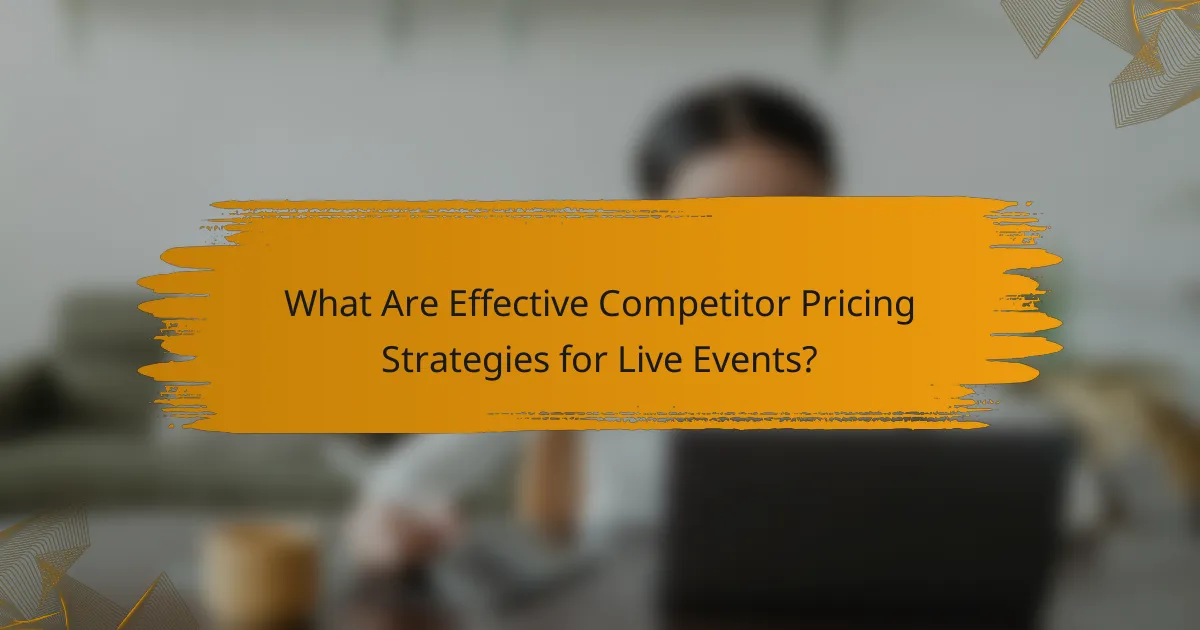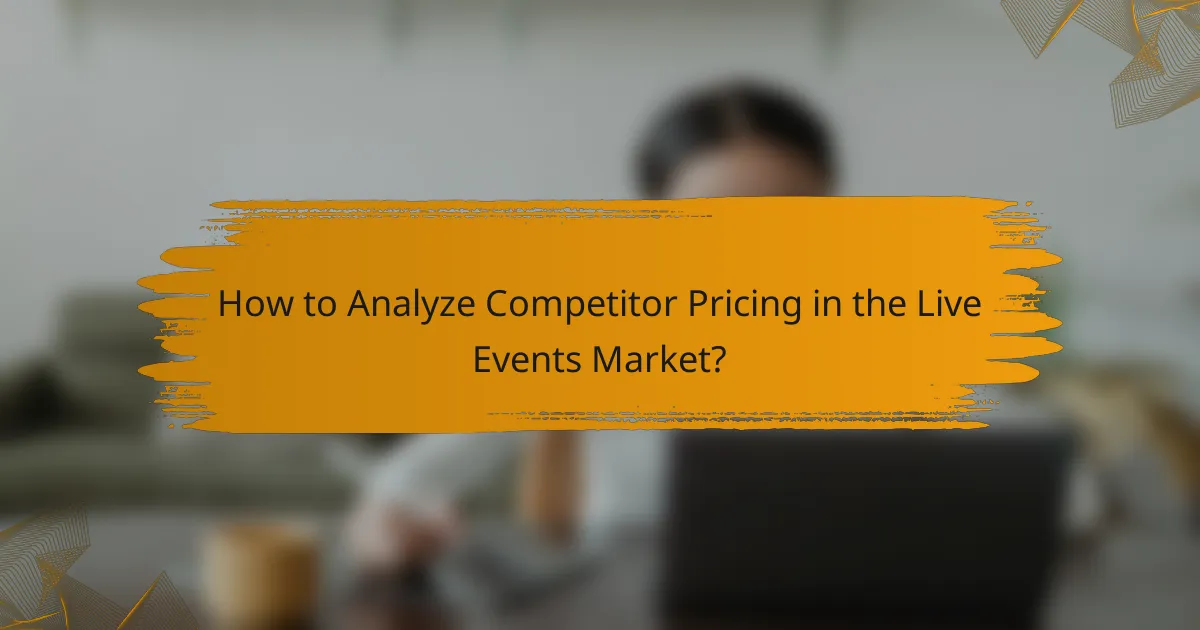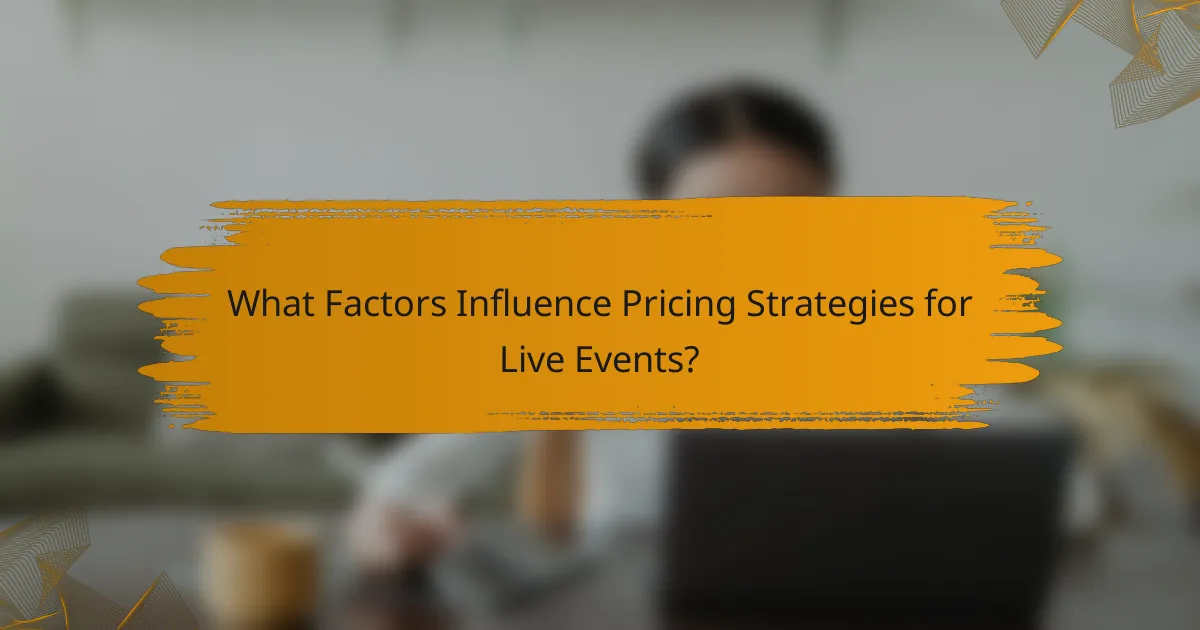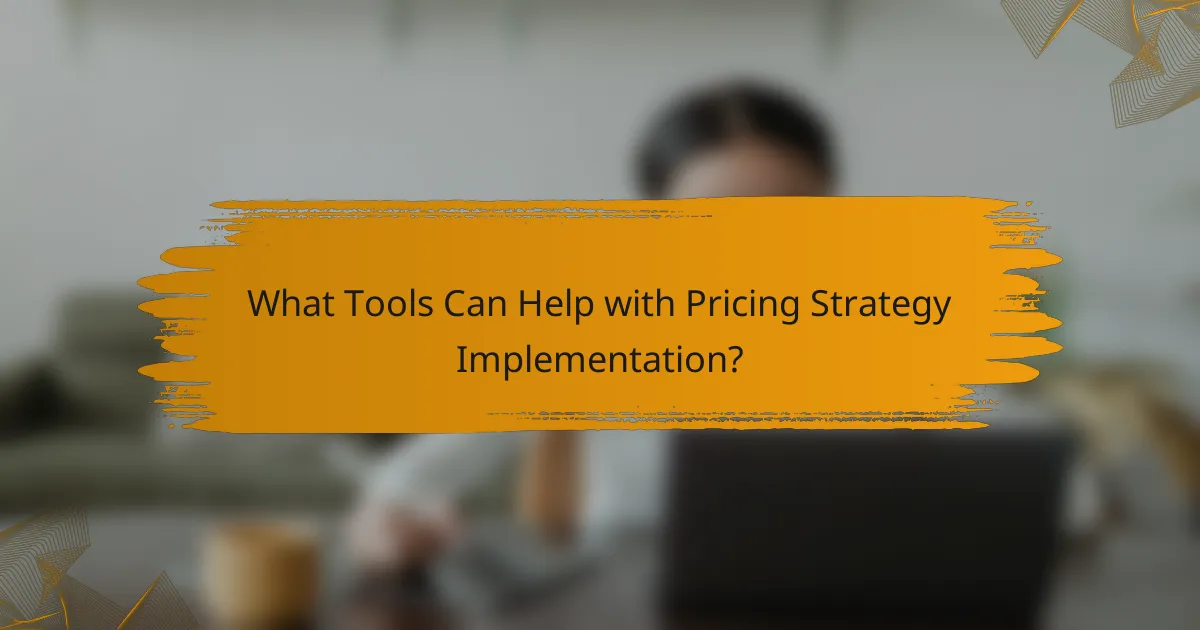Competitor pricing strategies for live events play a crucial role in maximizing revenue and attracting attendees. By analyzing how similar events are priced, organizers can identify market trends and consumer expectations, allowing for the development of tailored pricing approaches such as dynamic pricing and tiered ticketing. Understanding the various factors influencing pricing, including event type and audience demographics, is essential for setting competitive prices that ensure both engagement and profitability.

What Are Effective Competitor Pricing Strategies for Live Events?
Effective competitor pricing strategies for live events involve various approaches that help maximize revenue while attracting attendees. These strategies can include dynamic pricing, tiered ticketing, early bird discounts, group pricing, and bundled packages, each tailored to enhance market positioning and customer engagement.
Dynamic pricing models
Dynamic pricing models adjust ticket prices based on demand, time to the event, and other factors. This strategy allows organizers to capitalize on high demand periods, potentially increasing revenue significantly.
For example, ticket prices might rise as the event date approaches or as fewer seats remain available. However, it’s crucial to communicate these price changes clearly to avoid customer dissatisfaction.
Tiered ticket pricing
Tiered ticket pricing offers different price levels based on seating location or access to exclusive experiences. This model caters to various customer segments, allowing attendees to choose based on their budget and preferences.
For instance, a concert might offer general admission tickets at a lower price, while VIP packages include premium seating and additional perks. This strategy can enhance perceived value and encourage higher spending among attendees.
Early bird discounts
Early bird discounts incentivize customers to purchase tickets well in advance, often at a reduced price. This strategy helps organizers gauge interest and secure initial revenue before the event.
Typically, these discounts can range from 10% to 30% off the regular price and are effective in driving early sales. However, it’s essential to set a clear deadline to create urgency and encourage prompt purchases.
Group pricing options
Group pricing options provide discounts for bulk ticket purchases, appealing to organizations or friends attending together. This strategy can significantly increase ticket sales while fostering a sense of community among attendees.
For example, offering a 15% discount for groups of ten or more can motivate larger purchases. Ensure that the terms are straightforward to avoid confusion and maximize participation.
Bundled packages
Bundled packages combine tickets with additional offerings, such as merchandise or food and beverage vouchers, at a discounted rate. This strategy enhances the overall experience and adds value for attendees.
For instance, a sports event might offer a ticket plus a meal deal at a lower combined price than purchasing each separately. Bundling can increase average transaction value and improve customer satisfaction.

How to Analyze Competitor Pricing in the Live Events Market?
Analyzing competitor pricing in the live events market involves examining how similar events are priced to inform your own pricing strategy. This process can help identify market trends, consumer expectations, and potential gaps in your offerings.
Market research tools
Utilizing market research tools is essential for gathering data on competitor pricing strategies. Tools like Google Trends, SEMrush, and social media analytics can provide insights into popular events and pricing patterns. Additionally, platforms like Eventbrite and Ticketmaster can reveal ticket prices for various events, allowing for direct comparisons.
Consider using surveys and polls to gather qualitative data from potential attendees about their willingness to pay. This can help refine your pricing strategy based on consumer preferences.
Competitor pricing audits
Conducting competitor pricing audits involves systematically reviewing the pricing structures of your main competitors. This includes analyzing ticket prices, package deals, and any additional fees they may charge. Create a comparison table to visualize differences in pricing strategies, such as early bird discounts or VIP packages.
Regular audits can help you stay updated on pricing changes and promotional strategies, allowing you to adjust your own pricing accordingly. Be cautious of underpricing, as it may devalue your event and brand.
Consumer feedback analysis
Analyzing consumer feedback is crucial for understanding how your pricing is perceived in the market. Collect reviews and ratings from attendees of similar events to gauge their satisfaction with pricing and overall value. Tools like SurveyMonkey or Google Forms can facilitate this process.
Look for common themes in feedback regarding pricing, such as perceived value or complaints about high costs. This information can guide adjustments to your pricing strategy to better meet consumer expectations and enhance attendance.

What Factors Influence Pricing Strategies for Live Events?
Pricing strategies for live events are influenced by various factors, including the type and scale of the event, the demographics of the target audience, and the costs associated with the location and venue. Understanding these elements helps organizers set competitive prices that attract attendees while ensuring profitability.
Event type and scale
The type of event, whether it’s a concert, festival, conference, or sporting event, significantly impacts pricing strategies. Larger events typically have higher costs due to increased logistics, talent fees, and marketing expenses, which can lead to higher ticket prices.
For example, a major music festival may charge hundreds of dollars for a weekend pass, while a local workshop might only require a modest fee. Organizers should assess the expected scale and audience size to determine appropriate pricing tiers.
Target audience demographics
Understanding the demographics of the target audience is crucial for effective pricing. Factors such as age, income level, and interests can dictate how much attendees are willing to pay. For instance, events aimed at younger audiences might adopt lower pricing to encourage attendance, while premium experiences for affluent customers can command higher prices.
Conducting market research to gauge audience preferences and spending habits can inform pricing decisions. Offering discounts or tiered pricing based on demographic segments can also enhance accessibility and boost attendance.
Location and venue costs
The location of the event and the associated venue costs play a significant role in shaping pricing strategies. Venues in high-demand areas or major cities often come with higher rental fees, which can necessitate increased ticket prices to cover expenses.
Additionally, local economic conditions can affect pricing. In areas with a higher cost of living, attendees may expect to pay more for events. Organizers should evaluate venue options and their costs carefully, considering both the potential audience size and the financial implications of different locations.

How to Position Your Pricing Against Competitors?
To effectively position your pricing against competitors, analyze their pricing strategies and understand your unique value proposition. This approach allows you to set competitive prices that reflect the value you offer while ensuring profitability.
Value proposition development
Developing a strong value proposition is essential for differentiating your offerings from competitors. Identify what makes your product or service unique, such as superior quality, exceptional customer service, or innovative features. Clearly communicate this value to your target audience to justify your pricing strategy.
Consider using customer feedback and market research to refine your value proposition. This can help you understand what customers truly value and how much they are willing to pay, guiding your pricing decisions effectively.
Competitive benchmarking
Competitive benchmarking involves analyzing your competitors’ pricing structures to identify where you stand in the market. Gather data on their prices, promotional strategies, and customer perceptions to gain insights into their positioning. This information can help you determine whether to align, undercut, or premium-price your offerings.
Utilize tools like price comparison websites or market analysis reports to gather relevant data. Regularly updating your benchmarks ensures you remain competitive and can adapt to market changes swiftly.
Market positioning strategies
Market positioning strategies help define how your brand is perceived relative to competitors. Choose a positioning strategy based on your target market’s preferences, such as cost leadership, differentiation, or niche focus. Each strategy has its own implications for pricing and marketing efforts.
For example, if you opt for a differentiation strategy, you may set higher prices to reflect the added value. Conversely, a cost leadership strategy may require you to keep prices low to attract price-sensitive customers. Regularly assess your positioning to ensure it aligns with market trends and consumer expectations.

What Tools Can Help with Pricing Strategy Implementation?
Implementing an effective pricing strategy requires the right tools to analyze data, track customer interactions, and manage pricing models. Utilizing specialized software can streamline the process and enhance decision-making.
Pricing software solutions
Pricing software solutions are designed to help businesses set and adjust prices based on various factors such as demand, competition, and market trends. These tools often include features for dynamic pricing, allowing companies to respond quickly to market changes.
When selecting pricing software, consider factors like ease of integration with existing systems, user interface, and the ability to handle multiple currencies if operating internationally. Popular options include Pricefx, PROS, and Vendavo, which cater to different business sizes and industries.
Data analytics platforms
Data analytics platforms provide insights into customer behavior and market conditions, which are crucial for effective pricing strategies. These platforms can analyze historical sales data, customer preferences, and competitive pricing to inform pricing decisions.
Look for analytics tools that offer visualization features and predictive analytics capabilities. Tools like Tableau, Google Analytics, and Microsoft Power BI can help businesses identify trends and make data-driven pricing adjustments.
CRM systems for tracking
Customer Relationship Management (CRM) systems are essential for tracking customer interactions and understanding their purchasing behavior. By integrating pricing strategies with CRM data, businesses can tailor their pricing to specific customer segments.
Choose a CRM that allows for customization and can track pricing changes over time. Salesforce and HubSpot are popular options that offer robust tracking features, enabling businesses to analyze the impact of pricing strategies on customer retention and sales growth.


